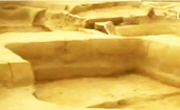중국 황제가 高句麗, 百濟, 倭의 군장이나 그 신료에게 除授한 將軍號 등의 官爵號를 토대로 그러한 여러 나라의 지배체제를 해명하려는 시도는 오래전부터 이루어졌다. 특히 백제나 왜에서...
http://chineseinput.net/에서 pinyin(병음)방식으로 중국어를 변환할 수 있습니다.
변환된 중국어를 복사하여 사용하시면 됩니다.
- 中文 을 입력하시려면 zhongwen을 입력하시고 space를누르시면됩니다.
- 北京 을 입력하시려면 beijing을 입력하시고 space를 누르시면 됩니다.

백제의 왕호(王號)·후호(侯號)·태수호(太守號)와 장군호(將軍號) - 5세기 후반 백제의 지배질서와 동아시아 - = Chinese Title of General and Baekje Titles of King, Marquis, and Governor - Beakje’s Regime Structure and East Asia in the Late Fifth Century -
한글로보기https://www.riss.kr/link?id=A105581625
- 저자
- 발행기관
- 학술지명
- 권호사항
-
발행연도
2018
-
작성언어
Korean
- 주제어
-
등재정보
KCI등재
-
자료형태
학술저널
-
수록면
291-354(64쪽)
- 제공처
-
0
상세조회 -
0
다운로드
부가정보
국문 초록 (Abstract)
그 뒤, 백제는 고구려의 공격으로 인해 왕도 한성이 함락되고, 일시적으로 멸망의 위기를 맞았다. 곤란한 상황에서 즉위한 동성왕은 南齊에게 신료의 장군호 제정을 요구하는 동시에 그것과 연동된 백제 왕족, 귀족의 3품 장군에게는 백제 독자의 王號를, 4품 장군에게는 侯號를, 한인 관료의 3·4품 장군에게는 太守號를 신하들에게 수여하고 있었다. 5세기 후반의 백제에서는 백제 귀족이나 한인 관료들을 왕권 아래에 위치시키기 위해, 중국 장군호를 극히 중시하고 있었다.
중국 황제가 高句麗, 百濟, 倭의 군장이나 그 신료에게 除授한 將軍號 등의 官爵號를 토대로 그러한 여러 나라의 지배체제를 해명하려는 시도는 오래전부터 이루어졌다. 특히 백제나 왜에서는 군주 자신의 官爵뿐만 아니라, 신료에 대한 將軍號 除正 요구도 여러 번 이루어졌고, 장군호를 비롯하여 중국 황제에게 除授 받은 관작이 중시되었다. 이 중에, 백제에서는 개로왕대에 이르러 적극적으로 백제왕의 官爵號 除正 요구가 이루어지게 되었다. 그것은 宋에게 백제의 국제적 지위를 정식으로 인정받는 것을 통해, 대외적으로는 집요하게 송에 백제의 軍政權을 요구하는 왜에게 외교적 견제를 가하기 위함이었고, 대내적으로는 개로왕이 제수된 관작, 특히 장군호를 토대로 신료들을 왕권 아래에 위치시키기 위함이었다. 개로왕은 중국 왕조의 장군호에 의거하면서 신료를 서열화하고 있었다.
그 뒤, 백제는 고구려의 공격으로 인해 왕도 한성이 함락되고, 일시적으로 멸망의 위기를 맞았다. 곤란한 상황에서 즉위한 동성왕은 南齊에게 신료의 장군호 제정을 요구하는 동시에 그것과 연동된 백제 왕족, 귀족의 3품 장군에게는 백제 독자의 王號를, 4품 장군에게는 侯號를, 한인 관료의 3·4품 장군에게는 太守號를 신하들에게 수여하고 있었다. 5세기 후반의 백제에서는 백제 귀족이나 한인 관료들을 왕권 아래에 위치시키기 위해, 중국 장군호를 극히 중시하고 있었다.
다국어 초록 (Multilingual Abstract)
Later, Paekche was temporarily in danger of collapse due to Koguryo's attack on the capital. King Tongsong, who took the throne under difficult circumstances, asked Southern Qi for the title of ‘Changgunho’, and gave the ‘Wangho(王號, king title)’ to Paekche royal family and nobles who were given the third rank ‘Changgunho’, and gave the ‘Huho(侯號, marquis title)’ to the fourth rank ‘Changgunho’, and gave the ‘T'aesuho(太守號, governor title)’ to Chinese officials in Paekche who were given the third or fourth rank ‘Changgunho’. In Paekche, in the late 5<sup>th</sup> century, ‘Changgunho’ was highly valued to place Paekche nobles and Chinese officials in Paekche under the King’s throne.
Attempts to account for the domination-system of various countries, such as Koguryo, Paekche, Wa, have been made for a long time, based on the ‘Changgunho’(將軍號, the name of General titles). Chinese emperor gave ‘Changgunho’ to kings or o...
Attempts to account for the domination-system of various countries, such as Koguryo, Paekche, Wa, have been made for a long time, based on the ‘Changgunho’(將軍號, the name of General titles). Chinese emperor gave ‘Changgunho’ to kings or officials of Koguryo, Paekche, Wa. In particular, there had been numerous requests for the ‘Changgunho’ of officials in Paekche and Wa as well as the titles of kings in Paekche and Wa. The titles received from the Chinese emperor, including ‘Changgunho’, were valued in various countries. King Kaero of Paekche actively requested titles from China. In this way, Paekche was officially recognized by the Liu Song dynasty for its international status. The purpose of Paekche diplomacy was to apply diplomatic checks to Wa, which was persistently demanding the military administration of Paekche to China, and to control to officials, based on King Kaero’s the name of titles(Changgunho). King Kaero ranked his officials according to the Chinese dynasty’s ‘Changgunho’.
Later, Paekche was temporarily in danger of collapse due to Koguryo's attack on the capital. King Tongsong, who took the throne under difficult circumstances, asked Southern Qi for the title of ‘Changgunho’, and gave the ‘Wangho(王號, king title)’ to Paekche royal family and nobles who were given the third rank ‘Changgunho’, and gave the ‘Huho(侯號, marquis title)’ to the fourth rank ‘Changgunho’, and gave the ‘T'aesuho(太守號, governor title)’ to Chinese officials in Paekche who were given the third or fourth rank ‘Changgunho’. In Paekche, in the late 5<sup>th</sup> century, ‘Changgunho’ was highly valued to place Paekche nobles and Chinese officials in Paekche under the King’s throne.
동일학술지(권/호) 다른 논문
-
- 백제학회
- 노중국 ( Noh Choong-kook )
- 2018
- KCI등재
-
- 백제학회
- 한지선 ( Han Ji-sun )
- 2018
- KCI등재
-
‘계유명(癸酉銘) 조상비(造像碑)’의 조성 주체 문제 재고
- 백제학회
- 김수진 ( Kim Su-jin )
- 2018
- KCI등재
-
웅진도독부의 백제부흥운동 재론 - 664년 사비산성 전투를 중심으로 -
- 백제학회
- 김수태 ( Kim Soo-tae )
- 2018
- KCI등재




 KISS
KISS






